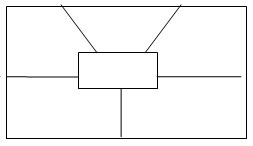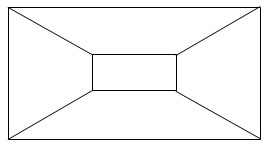| Social Studies | Close this window |
 What's this? What's this? |
Placemat Activity
This support material is incorporated into critical challenges at grade 11, however, it can be adapted for use at all grade levels.
The Placemat Activity strategy provides an opportunity for each student in a group to record individual responses and ideas regarding an issue, topic or question for consideration. The strategy can be used to brainstorm ideas, record researched information or analyze documents. Individual responses are shared with the group. After sharing and discussion, the group records agreed-upon responses in the centre of the placemat.
To use this strategy:
- divide the class into groups of four or five
- provide each group with one large sheet of paper/placemat and a marker for each group member
- instruct each group to divide its sheet of paper/placemat into sections, with an area in the centre and enough separate areas around the outside to match the number of members in the group, as illustrated below
- ask groups to record responses of individual students within their allotted space in one of the outside sections
- provide time for each student in the group to share his or her recorded responses with the group without discussion or debate from the other students
- ask groups to decide, collectively, on the five most important/significant items or responses and record them in the centre of the placemat—it is important that all group members agree on the top five items.
Placemat for a five-member group |
Placemat for a four-member group |
 |
 |
Possible Extensions
- have students or groups rank the top five responses in order of importance
- have students or groups create a representation, such as a poster, cartoon or oral presentation, to communicate the top five responses.
Credits
Adapted from Critical Challenges Across the Curriculum series. Permission granted by The Critical Thinking Consortium for use by Alberta teachers.

